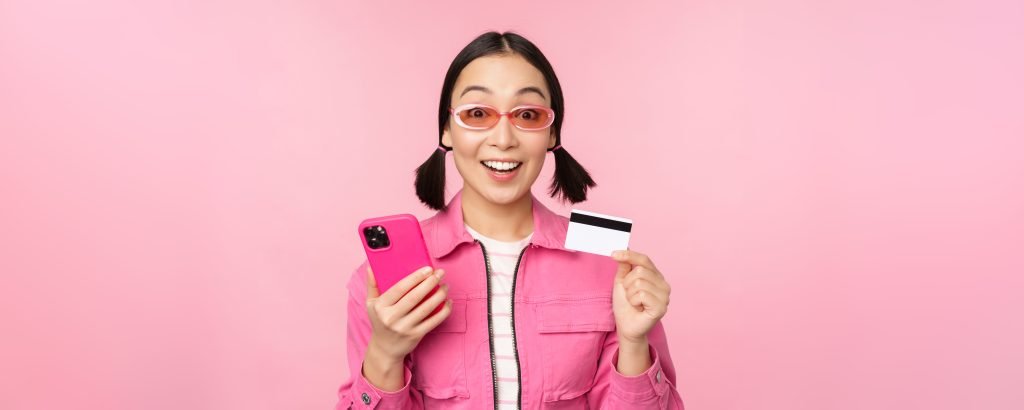The field of psychology has long been captivated by the ways in which we process information and make choices. In recent years, marketers and entrepreneurs have also begun to appreciate this research, acknowledging its capacity to enhance the customer experience. One particularly significant theory in this domain is Carl Jung’s archetype concept, which posits that specific universal symbols and themes exist within the human psyche.
As companies aim to establish connections with their clientele, comprehending the psychological factors that influence consumer behavior becomes increasingly vital. Carl Jung’s archetype theory offers a singular outlook on the marketing landscape, presenting a framework for understanding the universally resonant symbols and themes. By integrating archetypes into branding and marketing endeavors, businesses can generate more impactful and memorable customer experiences, cultivating long-lasting loyalty and engagement.

The secret weapon that can take your business to the next level.
What Exactly Are Carl Jung’s Archetypes?
The Collective Unconscious: Carl Jung’s archetype concept proposes that there is a collective unconscious that all humans share. This shared unconscious is made up of universal symbols, themes, and experiences that have been passed down through generations.
The Role of Archetypes in the Human Psyche: Archetypes are the symbols and themes that make up the collective unconscious. They are universal and represent fundamental human experiences, such as birth, death, and love.
How Do These Archetypes Influence Customer Behaviour?
The Power of Symbols: Symbols have an incredible ability to evoke emotions and give meaning to our experiences. When businesses incorporate archetypes into their branding and marketing efforts, they tap into this power to create a sense of familiarity and emotional resonance with customers. This not only helps businesses stand out from competitors but also fosters long-term customer loyalty.
The Significance of Emotions: Emotions play a crucial role in the decision-making process. Archetypes function by connecting with customers’ emotions, fostering a more profound bond with brands. This emotional connection heightens the chances of recurring business and customer loyalty.
The Unconscious Mind’s Influence: The unconscious mind holds considerable sway over decision-making, as numerous actions and choices are steered by subconscious mechanisms. By incorporating archetypes into their marketing campaigns, businesses can tap into the power of the unconscious mind and create more effective and influential marketing strategies. This not only increases the likelihood of attracting new customers but also strengthens the bond with existing ones.
The 12 Archetypes and Their Effect on Customer Experience
The Innocent: The Innocent archetype represents purity, simplicity, and optimism. Brands that tap into this archetype create a sense of safety and comfort for their customers.
The Explorer: The Explorer archetype represents adventure, discovery, and curiosity. Brands that tap into this archetype create a sense of excitement and possibility for their customers.
The Sage: The Sage archetype represents wisdom, knowledge, and intelligence. Brands that tap into this archetype create a sense of authority and expertise for their customers.
The Hero: The Hero archetype represents courage, strength, and resilience. Brands that tap into this archetype create a sense of empowerment and motivation for their customers.
The Outlaw: The Outlaw archetype represents rebellion, individualism, and freedom. Brands that tap into this archetype create a sense of independence and self-expression for their customers.
The Magician: The Magician archetype represents transformation, innovation, and creativity. Brands that tap into this archetype create a sense of awe and wonder for their customers.
The Regular Guy/Girl: The Regular Guy/Girl archetype represents simplicity, authenticity, and relatability. Brands that tap into this archetype create a sense of familiarity and approachability for their customers.
The Lover: The Lover archetype represents intimacy, passion, and sensuality. Brands that tap into this archetype create a sense of connection and desire for their customers.
The Jester: The Jester archetype represents humor, fun, and playfulness. Brands that tap into this archetype create a sense of lightheartedness and entertainment for their customers.
The Caregiver: The Caregiver archetype represents compassion, generosity, and nurturing. Brands that tap into this archetype create a sense of empathy and support for their customers.
The Creator: The Creator archetype represents imagination, innovation, and expression. Brands that tap into this archetype create a sense of originality and inspiration for their customers.
The Ruler: The Ruler archetype represents control, power, and authority. Brands that tap into this archetype create a sense of leadership and confidence for their customers.
Leveraging Archetypes to Forge a Robust Brand Identity
Developing a brand identity that resonates with customers is crucial for nurturing enduring loyalty and engagement. Businesses can harness archetypes as a potent instrument in crafting a unified and emotionally evocative brand image.
Archetypes represent universal symbols and patterns that elicit deep-rooted emotions and connect with individuals on a subconscious level. By utilizing these archetypes, businesses can cultivate a unique brand voice that communicates directly with their customers’ psyche.
Moreover, pinpointing and employing distinct archetypes that align with their target audience enables businesses to differentiate themselves from competitors, resulting in enhanced brand distinction and heightened customer loyalty.
By integrating archetypes into their branding and marketing strategies, businesses can generate a memorable and influential customer experience. Whether it’s through messaging, visual design, or advertising, archetypes can imbue a brand with a sense of significance and emotional connection that endures beyond the initial interaction.
Thus, tapping into the potential of archetypes is not only about establishing a brand identity, but also about fostering a deeper bond with customers that can spark long-lasting loyalty and engagement.
Revamping Marketing Campaigns with the Power of Archetypes
Archetypes have the incredible potential to transform marketing campaigns by establishing deep connections with customers and leaving an enduring emotional impact. This magic can be conjured through a variety of techniques that breathe life into archetypes. Let’s explore how archetypes can be integrated into marketing campaigns in a way that feels more human and genuine.
1. Weaving Tales: The Art of Storytelling with Archetypes
Using archetypes in storytelling allows businesses to create captivating narratives that strike a chord with customers. By incorporating these universal symbols, companies can craft relatable stories that evoke strong emotional reactions from their audiences. So, whether you’re sharing the tale of a heroic brand saving the day or an everyday person’s journey to self-discovery, archetypes can help make your story truly unforgettable.
2. Picture Perfect: The Impact of Archetypal Visual Imagery
A picture is worth a thousand words, and when it comes to visual representations of archetypes, that value skyrockets. By incorporating imagery that embodies archetypal themes, businesses can design striking and memorable marketing campaigns. Through the creation of a potent visual language, companies can enhance brand recognition and establish an emotional connection with their audience.
3. Crystal Clear Communications: Archetypes in Brand Messaging
The integration of archetypes into brand messaging can help businesses develop cohesive and emotionally resonant communications that truly speak to their target audience. By infusing archetypal themes into their messaging, companies can create a distinct brand voice that connects with customers on a deeper level. This way, the brand’s message becomes more than just words; it becomes a heartfelt conversation.
Revitalizing Archetype-Driven Marketing: Navigating Common Obstacles
While archetypes can serve as invaluable tools in forging strong emotional bonds with customers, they are not without their challenges. Here are some potential pitfalls to be mindful of when incorporating archetypes into your marketing strategy:
1. Overdoing it: Striking the Right Balance
Though archetypes can be highly effective, overusing them may result in a lack of originality and weakened impact. To prevent this, it is essential to find the perfect equilibrium between integrating archetypes and preserving your brand’s unique qualities.
2. Misalignment: Ensuring Archetypes Reflect Your Brand
Should archetypes fail to align with your brand’s values or target audience, they may generate confusion and inconsistency for your customers. To guarantee a cohesive and genuine customer experience, it is vital to select archetypes that accurately represent your brand’s identity and values.
3. Stereotyping: Treading Carefully to Avoid Misrepresentation
Archetypes, if used recklessly, can perpetuate harmful stereotypes that offend or alienate certain groups. To steer clear of this issue, approach the use of archetypes with sensitivity and caution, taking care not to reinforce damaging stereotypes.
By being aware of these potential challenges and navigating them with care, you can successfully leverage archetypes in your marketing campaigns, building strong connections with your customers while maintaining your brand’s authenticity.
FAQs About Archetypes and Customer Experience
Q: Can businesses use multiple archetypes in their branding and marketing efforts?
A: Yes, businesses can use multiple archetypes to create a more multifaceted and emotionally charged brand identity.
Q: How can businesses identify which archetypes will resonate with their target audience?
A: Conducting market research and gathering customer feedback can help businesses identify which archetypes will resonate most strongly with their target audience.
Q: Are archetypes a reliable predictor of customer behavior?
A: While archetypes can provide valuable insight into the universal symbols and themes that resonate with customers, they are not a foolproof.
In Conclusion: The Power of Archetypes in Marketing
Grasping the intricacies of consumer behavior and the impact of archetypes can enable businesses to create emotionally charged customer experiences. Carl Jung’s archetype theory offers a distinctive viewpoint on the universally shared symbols and themes that profoundly connect with individuals. By delving into the unconscious mind through archetypes, companies can develop more compelling and influential marketing strategies.
By recognizing and employing archetypes, businesses can forge a more unified and emotionally driven brand identity, distinguish themselves from rivals, and craft unforgettable customer experiences. However, it’s crucial for companies to exercise caution to avoid overusing archetypes, which could result in a loss of authenticity and differentiation.
In summary, archetypes hold the potential to be a game-changer for businesses, propelling them to new heights, but they must be utilized thoughtfully and with a clear purpose.

We are always here to help! If you have any questions or would like to learn more about how ethnographic mystery shopping can benefit your business, please don’t hesitate to reach out to us. Our team is happy to provide consultation and guidance to help you get the most out of your research. You can contact us via email at enquiry@centricideas.com. We look forward to hearing from you!
